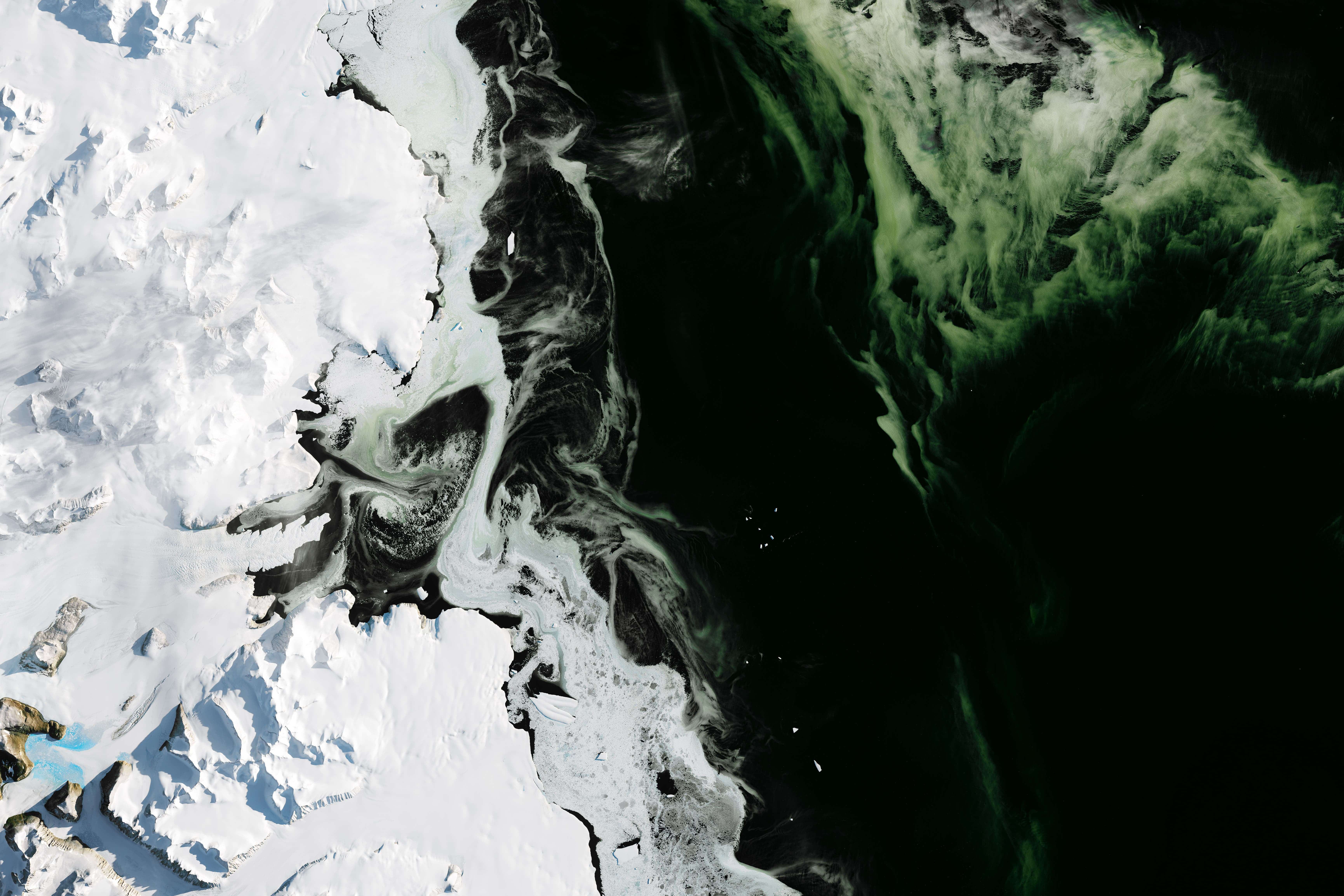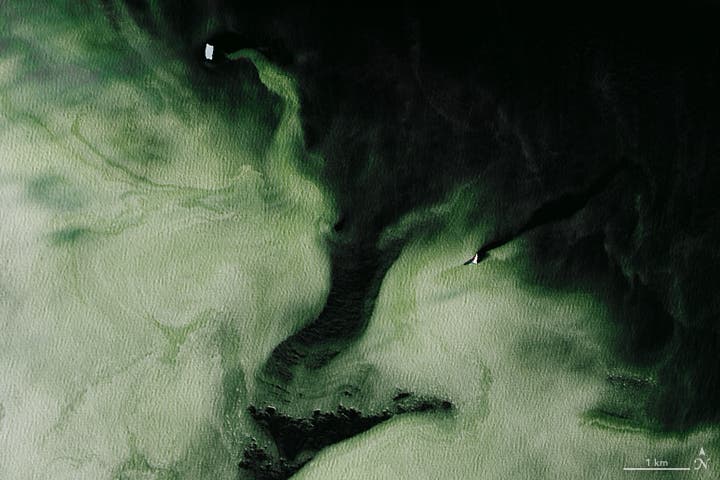Green-tinted ice spotted in Antarctica’s Granite Harbor last week raises questions about the role algal blooms play in arctic ecosystems and the effects of shifting climate on the area.

On March 5th, the Operational Land Imager (OLI) aboard the Landsat 8 snapped a few stunning pictures of Granite Harbor, Antarctica. This cove close to the Ross Sea sports an unusual shade of green slush ice, which was probably formed by phytoplankton trapped in freezing waters, marine glaciologist Jan Lieser of Australia’s Antarctic Climate and Ecosystems Cooperative Research Center told NASA’s Earth Observatory.
These tiny marine plants — known as microalgae — usually bloom around Antarctica during spring and summer months, when ice cover retreats allowing more sunlight to reach the ocean waters. They form the backbone of the Southern Ocean food chain, supplying abundant food to zooplankton, fish, pretty much every organism, either directly or indirectly. So they’re good news for the Antarctic. Mostly.
But it’s fall in the frozen south right now — so why are the algae still blooming? Well, it’s not the first time this happened, the Earth Observatory reported, but certain conditions have to be just right. In 2012, Lieser and her colleagues reported an enormous bloom even (124 miles/200 kilometers long and 62 miles/100 km wide) in late February and early March, just south of the current location. A scientific expedition was dispatched to make heads and tails of the discovery. They found that it wasn’t a case of free-floating algae greening the Antarctica — it’s sea-ice tinted green by algae growing in it.

Sunlight, nutrient levels, wind and water current patterns to shift these nutrients around, as well as ice-cover, all play a part in limiting — or promoting — these blooms which can grow huge enough to be seen from space very quickly. This year, Lieser notes, there wasn’t much ice anchored to the shoreline (fast ice) which is thought to help “seed” microalgae growth. But strong offshore winds and good sunlight levels created similar conditions to previous years which fostered blooms
Still, there’s a lot we don’t understand about why these blooms happen in the autumn. A new expedition is scheduled to visit the area and study the blooms in April this year.
“Do these kinds of late-season ‘blooms’ provide the seeding conditions for the next spring’s bloom? If the algae get incorporated into the sea ice and remain more or less dormant during the winter, where do they end up after the winter?” Liese asks.
Was this helpful?



